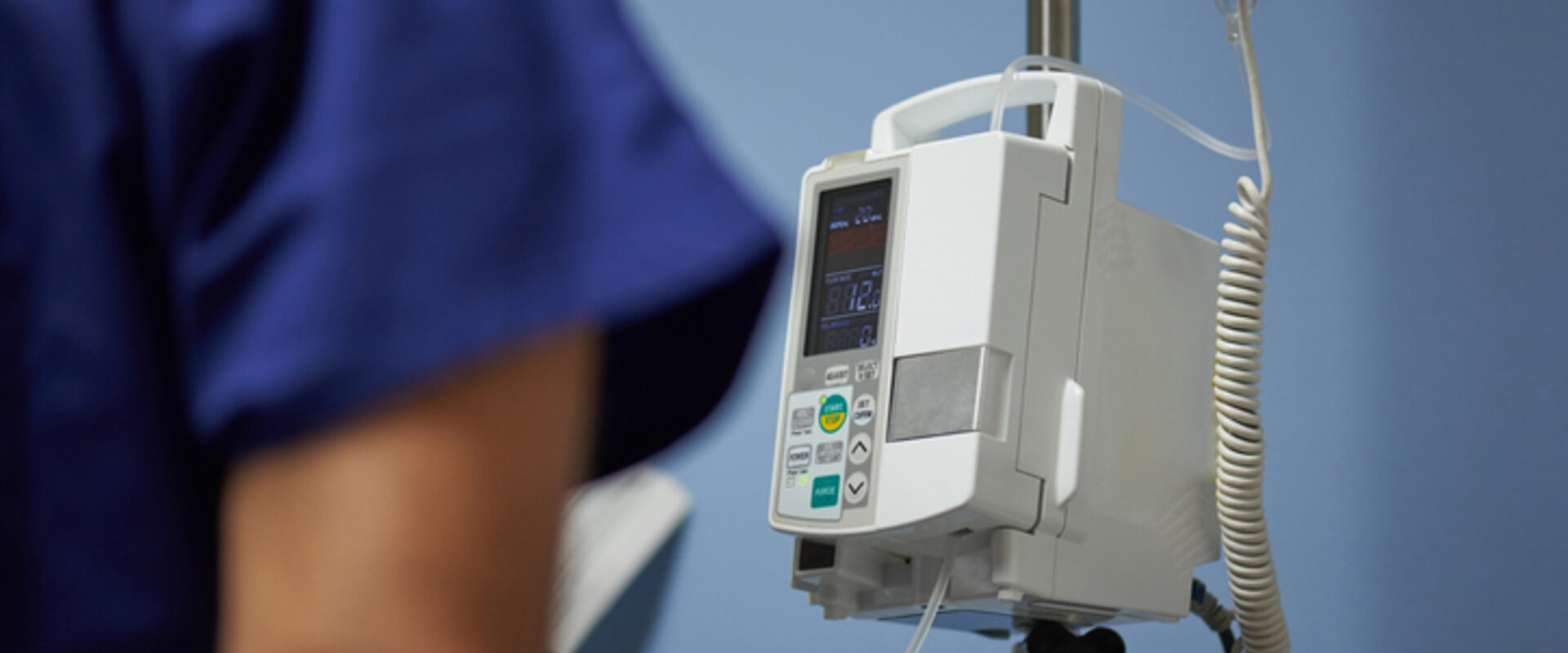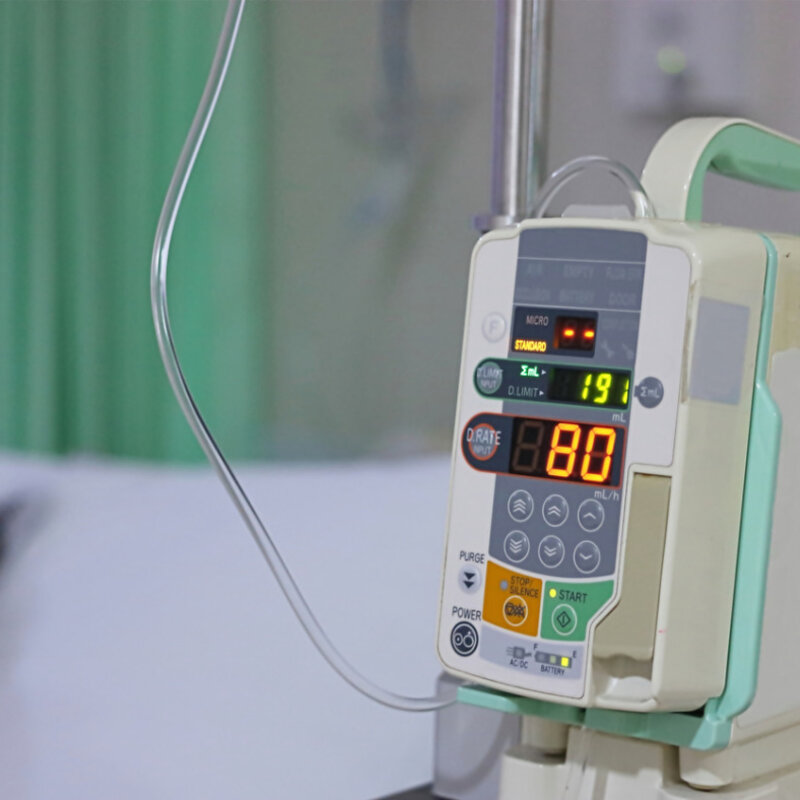
Improving Patient Safety with Infusion Therapy Calibrations
Challenge
Infusion therapy, where drugs are delivered into a patient’s veins or under their skin, is the most common kind of medical therapy. These methods have applications across areas like pain relief, anaesthesia and chemotherapy, and require a precise dose of a drug to be delivered at a specific rate. In some instances, such as neonatal care, this can be lower than 100 nL/min. Because of the critical nature of these therapies, incorrect dosing caused by inaccurate flow rates can result in serious consequences for patients, including severe health problems, unmanaged pain or death.
Traditionally, patient monitoring has been used to mitigate dosing errors, allowing flow rates to be adjusted until the correct level is found. However, for applications that use multi-infusions, where one or more drugs are mixed before reaching the patient, the actual dose beyond the mixing point can differ from the intended level, so the corresponding adjustment may not be adequate. It has therefore been vital to develop metrology not only to measure flow rate through drug delivery devices across a wide range, from nL/min to mL/min, but to determine the actual dose delivered to the patient.
Solution
Following on from EMRP project MeDD, EMPIR project MeDDII developed metrology for traceable measurements of flow rate, volume and pressure in drug delivery devices and in-line flow sensors. In particular, the project’s work allowed five National Metrology Institutes (NMIs) and Designated Institutes (DIs) – RISE (Sweden), METAS (Switzerland), CETIAT (France), DTI (Denmark) and IPQ (Portugal) – to create new calibration services for flow measurements. These services use both steady and fast-changing flow rates, and enable the characterisation of flow rates, flow rate response times and effective volumes in drug delivery devices.
At IPQ, a gravimetric (mass) set-up and an interferometric set-up were developed to traceably determine flow in devices like flow meters, syringe pumps, insulin pumps and instrument device analysers (also known as infusion pump analysers). Due to these set ups, the NMI’s lowest calibration flow rate has lowered from 0.1 mL/h to 300 nL/h (or, 0.0003 mL/h) with 2.5% uncertainty. This also has allowed IPQ to enter the field of microfluidics, where there is need for traceability for microfluidic devices.
Impact
One beneficiary of IPQ’s new calibration services was OVERMED, an accredited inspection body based in Belgrade, Serbia. OVERMED inspects and verifies measurement instruments used within medical devices like ultrasounds, dialysis machines and ventilators. They offer their services for a number of parameters relevant to these systems including pressure, volume, temperature and flow to ensure that devices used by medical institutions like hospitals and emergency centres satisfy national legal metrology requirements.
OVERMED were able to use the new calibration services at IPQ to calibrate instrument device analysers used to verify volumetric and syringe pumps. National regulations in Serbia require that volumetric and syringe pumps are tested every 12 months, so there was consistent demand for calibration. However, regulations also require that the equipment used by OVERMED be traceable in accordance with ISO/IEC 17025. As there were very few accredited labs for flow in Europe – especially for the required flow rates of as low as 0.025 mL/min – and using labs further afield (such as in the USA) was prohibitively expensive, this posed a significant roadblock to OVERMED’s services.
Calibrating instrument device analysers using IPQ’s new service has allowed OVERMED to meet the needs of both their customers and Serbian regulations while minimising costs. This ensures that the volumetric and syringe pumps they verify are accurate and that the devices they are used within will deliver accurate doses of drugs to patients. This has improved patient safety and helped to improve patient outcomes by ensuring the treatments they need are delivered over the correct timeframe.
- Category
- EMPIR,
- Health,
